Another of my day trips. Another day off. As a Norfolk bloke, I almost felt as though I was following in the footsteps of the Iceni during the Boudiccan Uprising. I had a good day. One to one tour of the Roman vaults of the old Claudian temple. Here are my photos.
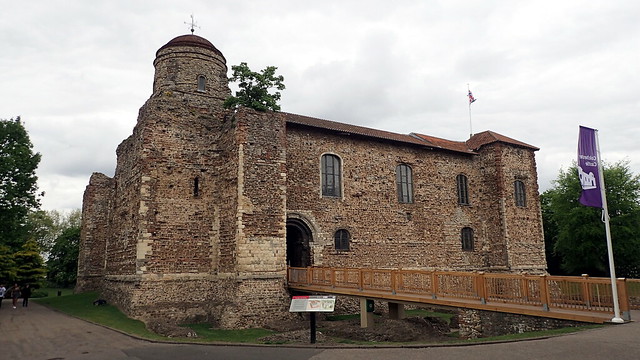
Colchester Castle. Norman medieval, but built directly onto the foundations of the old Roman temple, and recycling much of it's old building material. When the Romans invaded the British Isles in AD 43, they quickly headed for this site. It was an area of importance for the Trinovante tribe. The Romans considered it as the nearest that the South East British had to a Capital City. Claudius followed the crossing with a herd of armoured elephants. He accepted submission here.
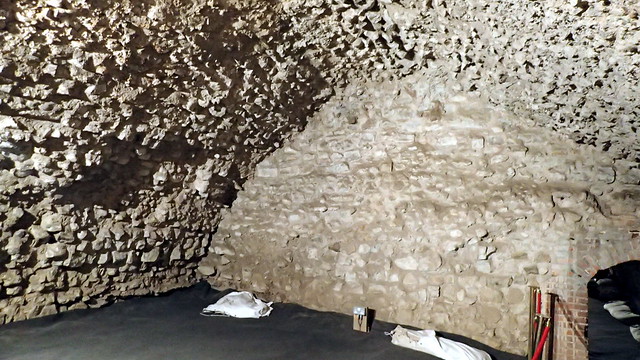
Here I'm in the vaults. These were Roman laid foundations for an enormous temple, built for the late emperor Claudius, who had been deified. A monument to the Roman dominance of Britannia.
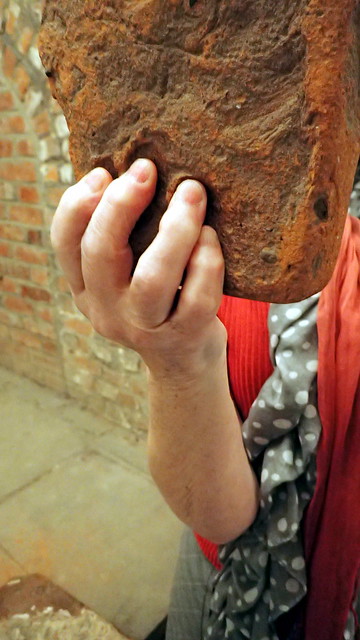
A Roman tile, with finger prints where it was handled still soft.
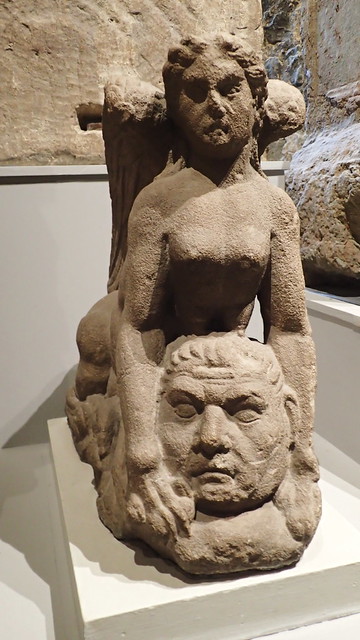
The Colchester "Sphinx".
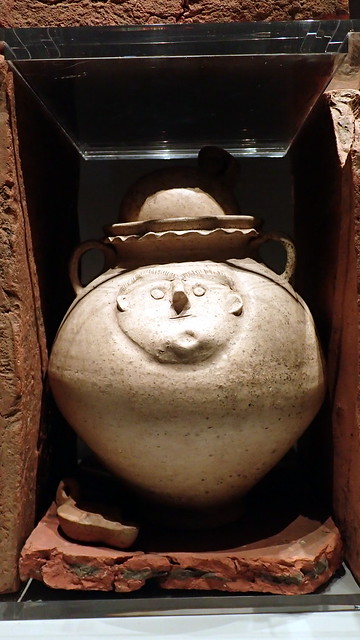
Romano-British smiley on a crematory jar.
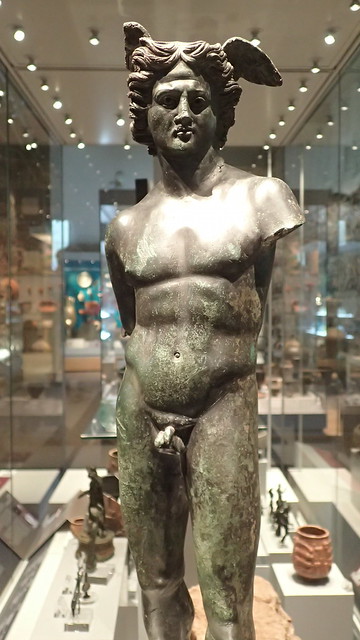
The Colchester Hercules.
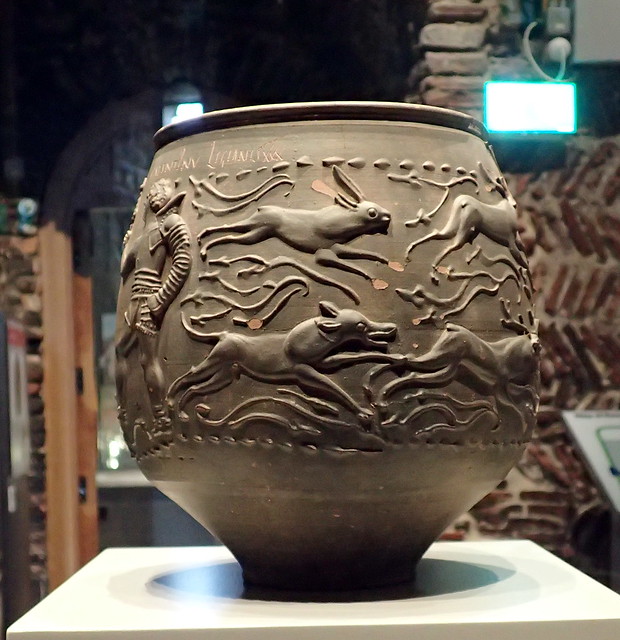
Hunting scenes in ceramic.
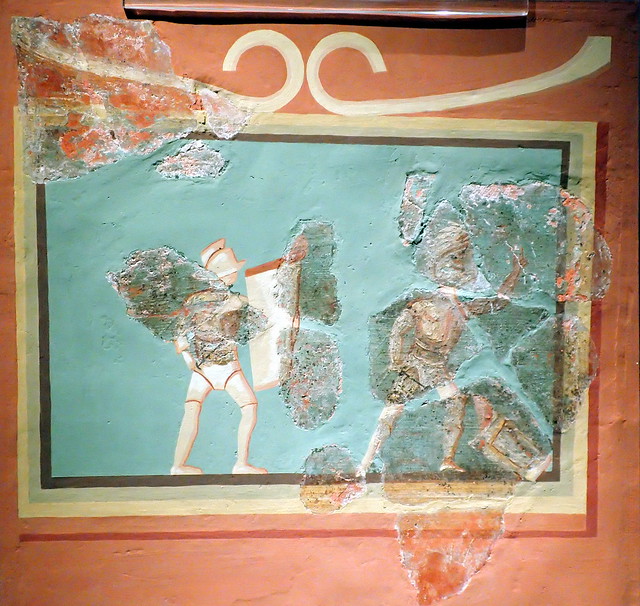
Gladiators at Colchester, Essex.
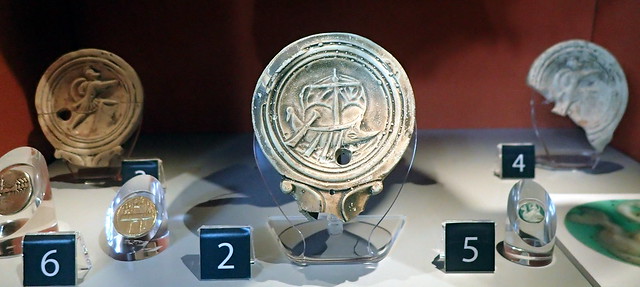
I'm becoming increasingly interested in shipping and vessels. The North Sea and Channel were bridges rather than walls.
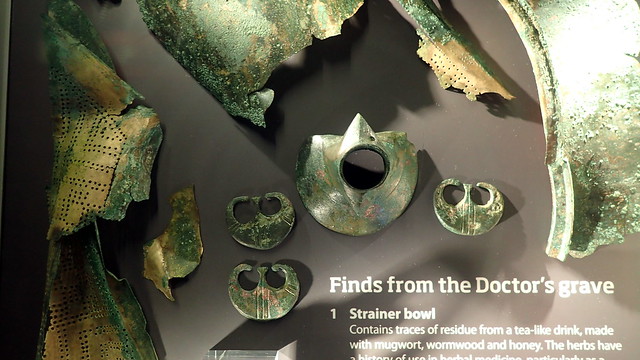
I learned about this one on an archaeology course years ago. The Colchester Roman Doctor's grave. Complete with surgery kit and ... games!
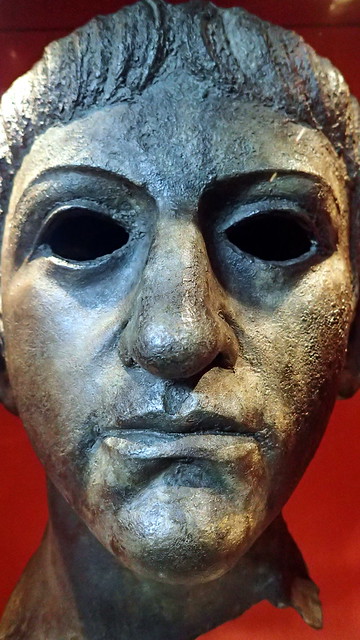
Claudius. Found in a local river. Far too small to have been from the huge bronze effigy that was housed in the temple when Boudicca attacked.
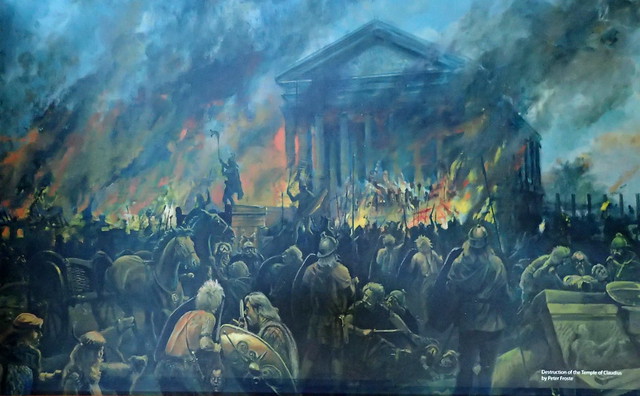
Reconstruction of the Boudiccan siege of the Claudian temple - where the castle was later built, now a museum. Having been beaten, while her daughters were raped, the widow of King Prasutagus of the Iceni (the Iron Age tribe of what is now Norfolk), rose against Rome. Her army stormed down to Colchester. The citizens hid in the temple, which was laid siege for two days, before her warriors broke through and murdered every Roman citizen before burning the town down.
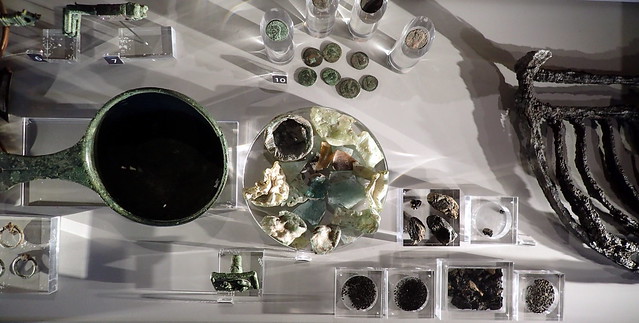
Finds, including molten glass, from the burning of the Roman town by the Iceni led rebels.
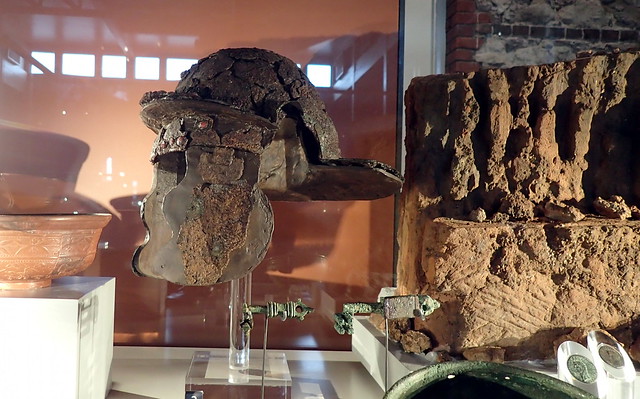
More finds from this burning event.
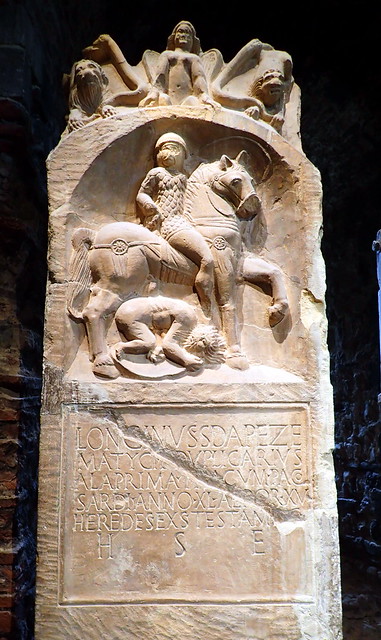
Tombstone of a Roman Legionnaire at Colchester. This one was Thracian, born in what is now Bulgaria. His figure stomping down on a local Briton. This sort of arrogance may have inflamed the rebellion.
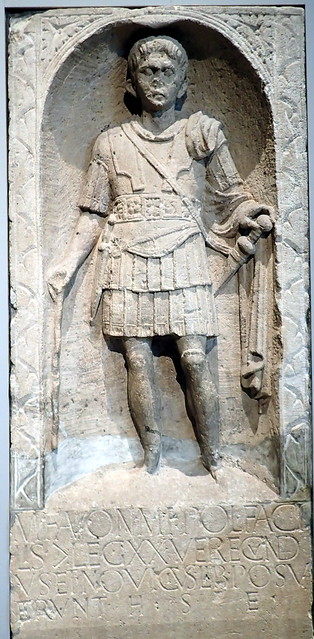
Another soldier's tombstone at Colchester. The town was created as a reward to retiring soldiers, that were granted land in reward for their service to Rome. Colchester today is still a Garrison town.
The Colchester Roman Circus
I then walked a mile to the site of a Roman circus.
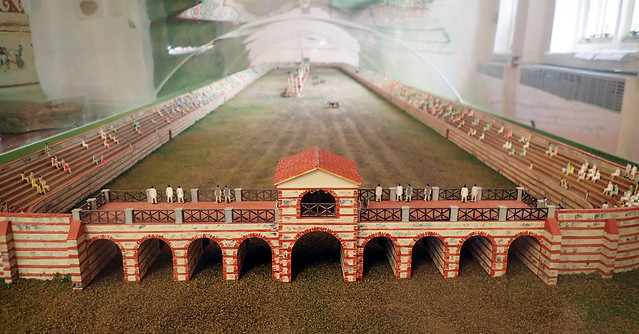
Model reconstruction.
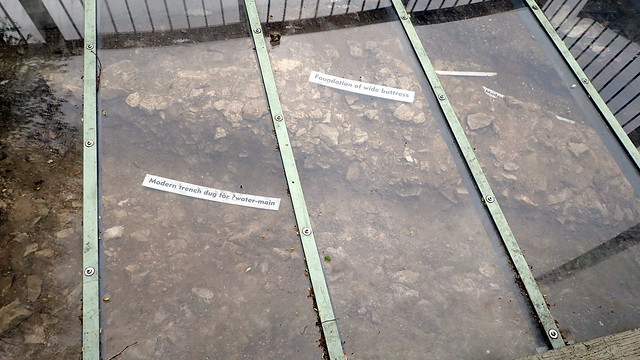
A little exposed archaeology. The circus was discovered close to the modern garrison in recent years, and excavations are ongoing. The only Roman circus so far discovered in the British Isles. A centre of chariot racing. The stands would have held up to 8,000 spectators:
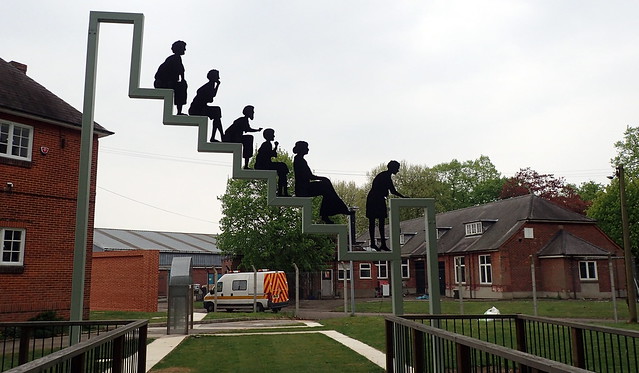
Today, nothing stands above the surface, other than a few reconstructed foundations.
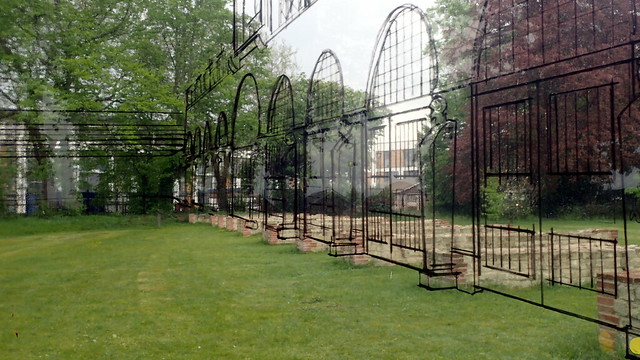
These reconstructions, along with a glass viewing pane invite us to time travel:
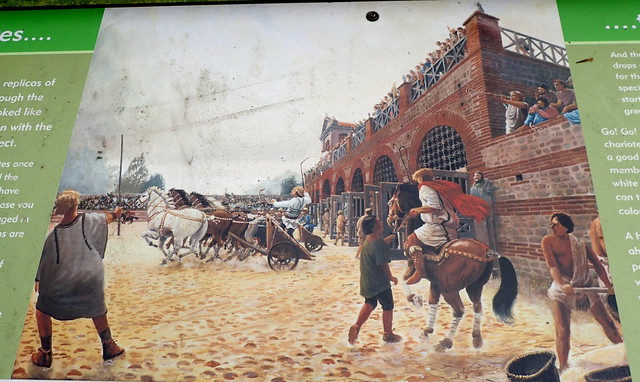

Colchester Castle. Norman medieval, but built directly onto the foundations of the old Roman temple, and recycling much of it's old building material. When the Romans invaded the British Isles in AD 43, they quickly headed for this site. It was an area of importance for the Trinovante tribe. The Romans considered it as the nearest that the South East British had to a Capital City. Claudius followed the crossing with a herd of armoured elephants. He accepted submission here.

Here I'm in the vaults. These were Roman laid foundations for an enormous temple, built for the late emperor Claudius, who had been deified. A monument to the Roman dominance of Britannia.

A Roman tile, with finger prints where it was handled still soft.

The Colchester "Sphinx".

Romano-British smiley on a crematory jar.

The Colchester Hercules.

Hunting scenes in ceramic.

Gladiators at Colchester, Essex.

I'm becoming increasingly interested in shipping and vessels. The North Sea and Channel were bridges rather than walls.

I learned about this one on an archaeology course years ago. The Colchester Roman Doctor's grave. Complete with surgery kit and ... games!

Claudius. Found in a local river. Far too small to have been from the huge bronze effigy that was housed in the temple when Boudicca attacked.

Reconstruction of the Boudiccan siege of the Claudian temple - where the castle was later built, now a museum. Having been beaten, while her daughters were raped, the widow of King Prasutagus of the Iceni (the Iron Age tribe of what is now Norfolk), rose against Rome. Her army stormed down to Colchester. The citizens hid in the temple, which was laid siege for two days, before her warriors broke through and murdered every Roman citizen before burning the town down.

Finds, including molten glass, from the burning of the Roman town by the Iceni led rebels.

More finds from this burning event.

Tombstone of a Roman Legionnaire at Colchester. This one was Thracian, born in what is now Bulgaria. His figure stomping down on a local Briton. This sort of arrogance may have inflamed the rebellion.

Another soldier's tombstone at Colchester. The town was created as a reward to retiring soldiers, that were granted land in reward for their service to Rome. Colchester today is still a Garrison town.
I then walked a mile to the site of a Roman circus.

Model reconstruction.

A little exposed archaeology. The circus was discovered close to the modern garrison in recent years, and excavations are ongoing. The only Roman circus so far discovered in the British Isles. A centre of chariot racing. The stands would have held up to 8,000 spectators:

Today, nothing stands above the surface, other than a few reconstructed foundations.

These reconstructions, along with a glass viewing pane invite us to time travel:

In summary, Colchester was indeed an impressive, large town on the edge of the Western Roman Empire. My personal opinion is that population geneticists that dismiss the contribution of RB haplogroups and DNA to the Southern British population should beware.